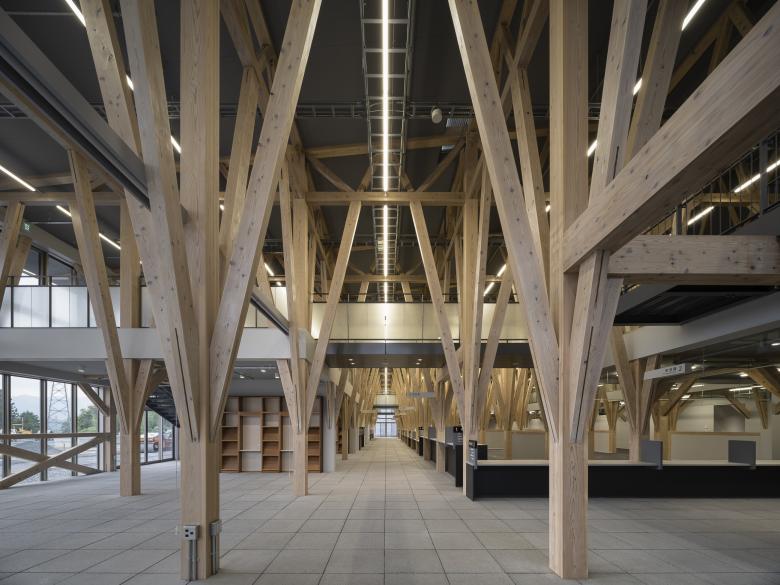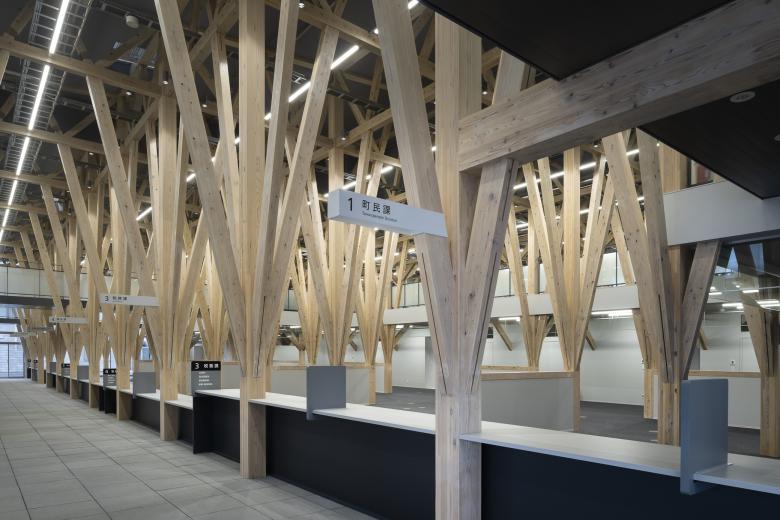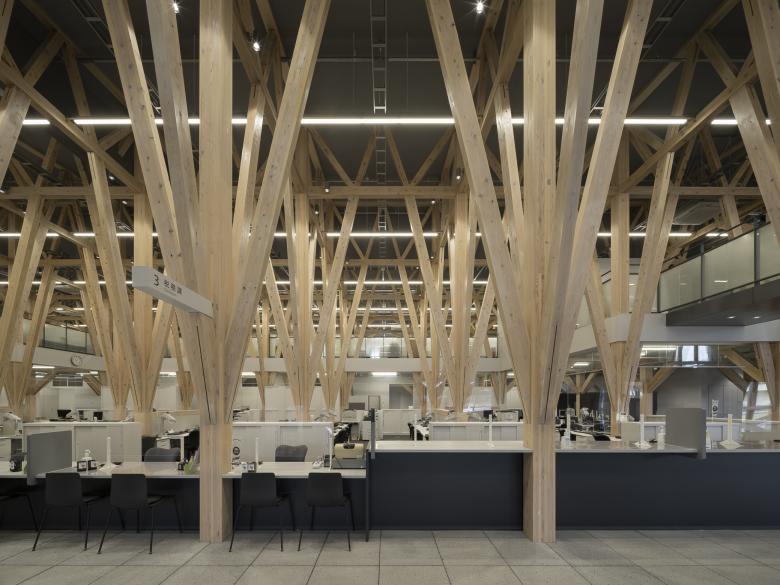Daigo Town Hall
Daigo Town, Ibaraki, Japan
- Architects
- Katsuhiko Endo Architect and Associates
- Location
- Daigo Town, Ibaraki, Japan
- Year
- 2022
A WOODEN FRAME THAT EXISTS AUTONOMOUSLY
The town hall is located on a hill surrounded by the Yamizo mountains and with a view of the central urban area of Daigo town.
Previously, the plan had been to locate the building in the same premises as before, and to make it a steel-framed structure as a measure against the flooding of nearby river. However, following the massive damage wrought by Typhoon Hagibis (Typhoon No. 19) in October 2019, it was decided that the town hall should be erected on highland and it made us possible to build wooden structure with local lumber, such as cedar and cypress.
In an effort to create a new landscape that responds to the needs of the town, I have designed a building that has wide eaves to help protect the structure from sun, wind, and rain. It comprises a large one-room space to meet future spatial requirements.
The building has a maximum height of nine meters, and a 113.7 meter-long roof supported by wooden frames made of lumber, glulam (laminated wood), and bonded binding timber.
From the design stage, we took into account the need to use locally produced materials and so secured about 900 cubic meters of local lumber, making sure that our specifications matched the dimensions of national commercially available materials. We thus used 24cm x 24cm cedar glulam for the posts, 24cm x 36cm cedar bonded binding timber for the beams, and 12cm x 21cm cedar lumber for the spurs.
All buildings in this earthquake-prone country must have their anti-seismic walls. However, if we use braces which are used commonly for wooden structure to strengthen the walls, the numbers of anti-seismic walls are required to increase and making it difficult to ensure the function of the building. In addition to having been distributed aseismatic elements around the perimeter of the building, the frames with two posts—3.6meters apart with spurs— have been arranged in the center of the building, adding the required structural strength given that there are no fixed internal walls. The central open space has made it possible to integrate the town hall offices and adjust their layout to meet changing needs. In other words, it is a user-friendly floor plan.
In addition, by having limited to three the angles between the spurs and the posts, we sought to simplify precutting requirements and processing in order to streamline construction.
All large and wooden buildings are subject to fireproofing requirements. In this case, we utilize walls (two-hour fire rated core compartment) that limit the open area of the building to less than 3,000 square meters and border it with core compartments.
I was able to realize the expression of trees by making the building fireproof and incorporated burning margin design. In addition, with the option of using sprinklers, there is a need for fewer walls, which block the space. The result is a continuous wooden structure from outside to the inside of the building. The facility components, which are a factor in the spread of fire in wooden edifices, have not been hidden to ensure ease of maintenance and allow them to form an integral part of the space.
By having consciously integrated the elements of the architecture, I believe that an autonomous expression of the wooden frame has been achieved. I hope that in the future, it will be an architecture that will be passed down in the thoughts and feelings about the trees of Daigo town.
Related Projects
Magazine
-
WENG’s Factory / Co-Working Space
3 days ago
-
Reusing the Olympic Roof
1 week ago
-
The Boulevards of Los Angeles
1 week ago

















